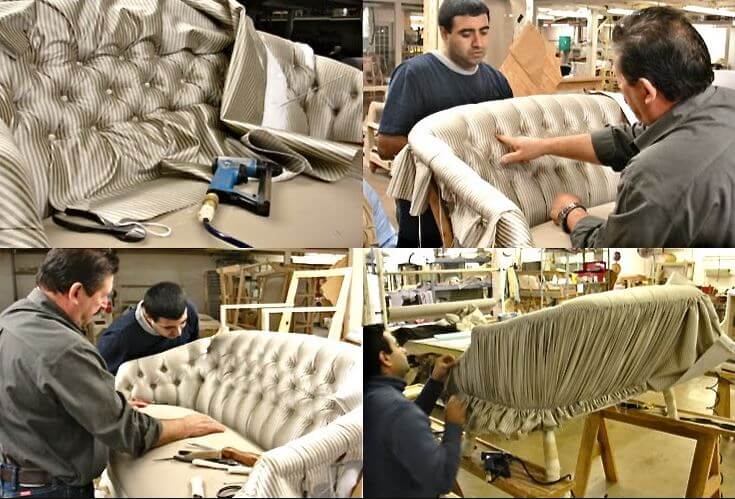Sofas are often the centerpiece of our living spaces, serving as a cozy haven for relaxation, entertaining guests, or curling up with a good book. Over time, however, even the sturdiest sofas can begin to show signs of wear and tear. When your beloved sofa starts to lose its charm, reupholstering it can be a game-changing solution. Not only does it breathe new life into your furniture, Sofa upholstery Dubai but it also allows you to customize your sofa to better suit your evolving style and needs.
In this guide, we will explore the benefits of sofa upholstery, the steps involved in the process, and some expert tips to ensure a stunning and long-lasting result.
Why Reupholster Your Sofa
Reupholstering a sofa comes with a host of benefits that go beyond mere aesthetics. Here are a few reasons why it might be the perfect choice for you:
Cost-Effective Alternative to Replacement
Purchasing a brand-new sofa can be a significant expense, especially if you’re aiming for high-quality craftsmanship. Upholstery provides a more affordable way to restore your sofa’s appeal without compromising on comfort or durability.
Eco-Friendly Choice
Opting for reupholstery reduces waste by extending the life of your furniture. It’s a sustainable practice that minimizes landfill contributions and conserves resources.
Customization Opportunities
Reupholstery gives you complete control over the design. You can choose fabrics, patterns, and colors that align perfectly with your interior decor, creating a one-of-a-kind piece.
Preserving Sentimental Value
If your sofa holds sentimental value, such as being a family heirloom, reupholstering allows you to maintain its structure while giving it a fresh appearance.
The Upholstery Process: Step-by-Step
Understanding the reupholstery process can help you make informed decisions and better communicate with professionals or handle a DIY project. Here’s a breakdown of the steps involved:
Assessment and Planning
Begin by evaluating the condition of your sofa. Check the frame, springs, and padding to ensure they are sturdy and intact. If structural repairs are needed, address them before moving forward.
Choosing the Right Fabric
Select a fabric that suits your lifestyle and aesthetic preferences. Consider factors such as durability, maintenance requirements, and resistance to wear and stains. Popular options include cotton, linen, velvet, and synthetic blends.
Measuring and Cutting
Accurate measurements are crucial to avoid fabric wastage or shortages. Cut the fabric pieces according to the sofa’s dimensions, leaving extra material for tucking and adjustments.
Removing the Old Upholstery
Carefully strip away the old fabric, keeping track of how it was attached. This step provides a blueprint for reapplying the new material.
Adding Padding and Support
Replace or reinforce the padding to restore comfort and shape. High-density foam or batting can be used to achieve a plush finish.
Securing the New Fabric
Begin attaching the new fabric, starting with the larger sections like the backrest and seat. Use staples, tacks, or adhesive, depending on the sofa’s design. Ensure the fabric is pulled taut to prevent wrinkles or sagging.
Finishing Touches
Trim any excess fabric and reattach decorative elements such as buttons, tufting, or piping. Inspect the sofa for any loose areas or imperfections before finalizing.
Expert Tips for a Flawless Upholstery Job
Invest in Quality Materials: High-quality fabric and padding can make a significant difference in the longevity and appearance of your reupholstered sofa.
Choose a Neutral Palette for Versatility: If you’re unsure about patterns or bold colors, opt for neutral tones. They’re timeless and easy to complement with decorative pillows or throws.
Work with Professionals for Complex Projects: Intricate designs or antique sofas may require the expertise of a skilled upholsterer. Their experience ensures precise execution and superior results.
Protect Your Sofa: After reupholstery, use slipcovers or fabric protectors to guard against spills, stains, and sun damage.
Embracing DIY Upholstery
For those who enjoy hands-on projects, DIY sofa upholstery can be a rewarding experience. However, it requires patience, attention to detail, and the right tools. Some basic supplies include:
Upholstery fabric
Staple gun and staples
Scissors and utility knife
Measuring tape
Upholstery foam and batting
Upholstery tacks or decorative nails
Start with a simpler piece to build your skills before tackling more complex designs. Online tutorials and classes can provide valuable guidance along the way.
The Final Word
Sofa upholstery is an artful blend of creativity and functionality. Whether you choose to collaborate with a professional or embark on a DIY journey, reupholstering your sofa is a worthwhile investment that enhances the beauty and comfort of your living space. By choosing the right materials, following proper techniques,Upholstery abu dhabi and protecting your finished piece, you can enjoy a revitalized sofa that stands the test of time.
Transform your living room with the magic of reupholstery and let your sofa become a true reflection of your style and personality.



